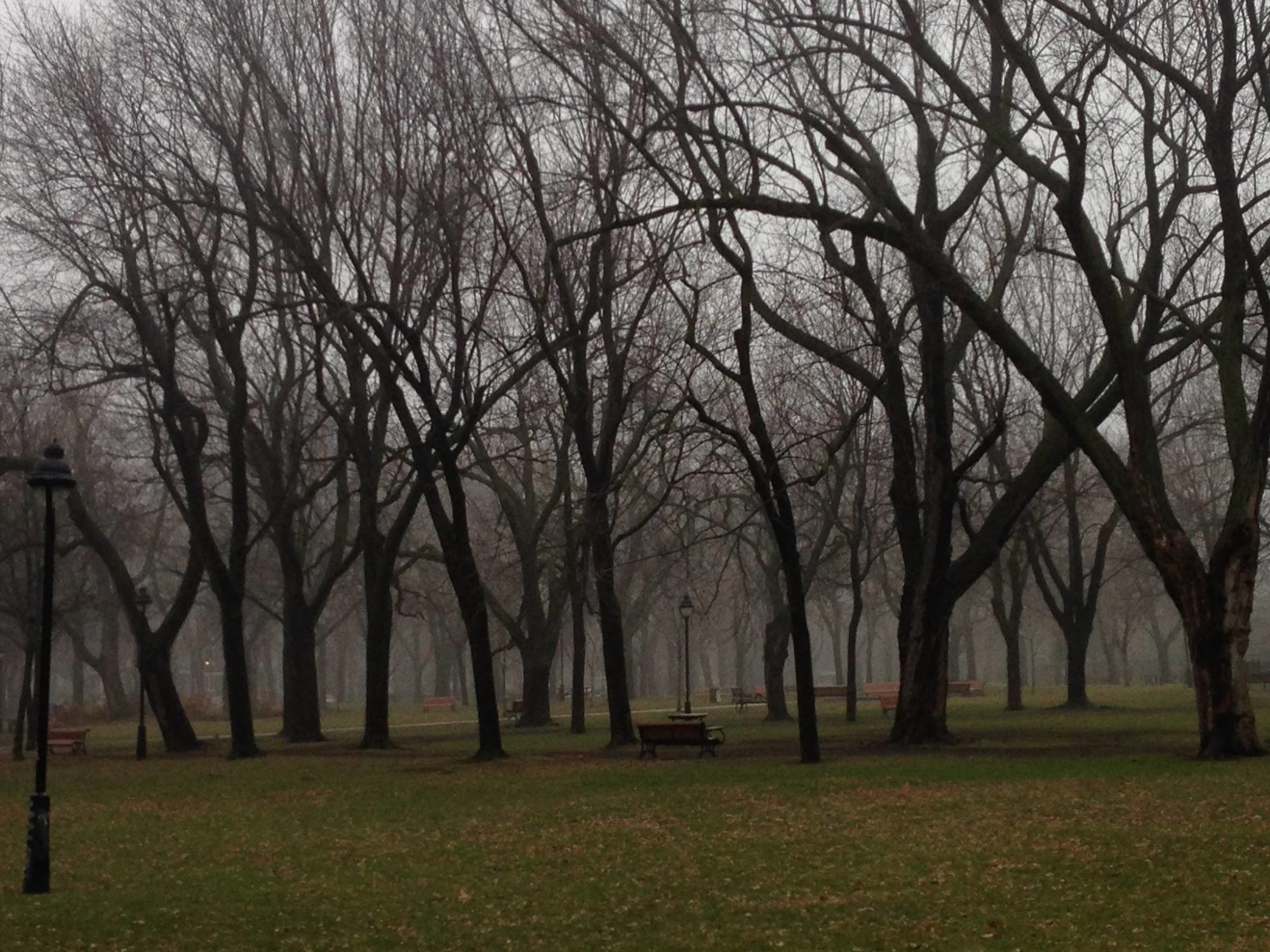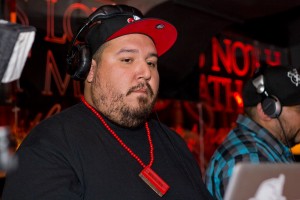THE Indigenous media arts festival!
The 12th annual ImagineNative film and media arts festival took place from October 19-23 with great fanfare. The festival, which promotes the latest indigenous films, videos, radio and new media began in 1998 and has become one of the most important indigenous festivals in the world. It has provided a much needed platform for the sharing of indigenous works and connecting them with buyers and industry execs. ImagineNative, also known as the centre for aboriginal media, continues to grow and reflect the needs and beauty of our culture. The organizers are determined to eliminate stereotypical views of indigenous peoples through indigenous cultural expression.
ImagineNative itself got started on Wednesday the 19th with an opening gathering presented by the Thunderbird centre. There was the traditional opening prayer followed by a meet-and-greet before heading off to the TIFF Bell Lightbox to see the screening of “On the Ice†by director Andrew Okpeaha MacLean which was followed by an opening night party featuring a performance by A Tribe Called Red. There were many other events, including an artist talk and reception event with Jason Edward Lewis on the Thursday night and a curator talk and reception with Cheryl L’Hirondelle on the Friday.
One of the major events was on the Friday, “A discussion with Buffy Sainte Marie,†presented by the CBC and hosted by Wab Kinew. The Cree singer-songwriter, musician, composer, visual artist, educator, pacifist, and social activist took the audience on a tour of her life, beginning with her ground-breaking musical career, her love of teaching, the cradle board project and her many other projects. Buffy also put on an electrifying performance at the Phoenix concert theatre the following Saturday night. Sean Conway and Lena Recollet opened for the icon, and both acts warmed up the crowd considerably before Buffy came in and blew the roof off. Songs included Big Wheel Spin and Spin, Universal Soldier, Up Where We Belong, Cho Cho Fire and No No Keshagesh, both from her recent album.
Executive Director Jason Ryle had this to say about this year’s festival. “I’m happy beyond words with this year’s imagineNATIVE Film and Media Arts Festival. It was our largest Festival ever and I’m so touched by the level of community support. Feedback for our programming and new venue has been immensely positive and I thank everyone for coming out and making this the most successful imagineNATIVE to date.â€
As mentioned before, ImagineNative is a film festival and there was no shortage of great films. I was amazed with the level of talent that played on the screen day after day. Here is a sampling of some of them.
“The Creator’s Gameâ€
This documentary provided an in-depth look at the issue of the Iroquois Nationals being refused entry to the 2010 lacrosse world championship in England due to the lack of recognition given to their passports by the UK government. The film was made by Candace Maracle, a member of their nation and community, for a Masters’ thesis. Not only does the film follow the team members, but it also tracks lacrosse stick making and the team’s successful journey to the world Championships in Prague, 2011, where they came 2nd to team Canada. Hearing the use of one of their nation’s traditional songs in place of an American or Canadian national anthem before the team played against Canada was one of the most stirring moments of the film, and represented their struggle for sovereignty that continues to this day.
“International spotlight on the Khoi San IIIâ€
These shorts out of South Africa told some fictional, some real-life stories of contemporary Khoi-San communities affected not just by colonization, but by the erasure of their culture from being categorized as black South Africans and a collective loss of culture as a result. The Khoi-San struggle to find their identity while figuring out how to use what they have left of their heritage going forward in post-apartheid South Africa.
“The Uprootedâ€
Tales from the 1895 Maori forests to modern-day Urban hip hop and its role in the lives of youth play out in this profound collection of shorts. The first film, “OK Breathe Auralee ,â€Â explored the issue of knowing – or not knowing – where you come from in order to know where to go with your future. Other shorts dealt with themes such as rejecting daily attempts at being defined by your skin colour, to rediscovering your identity in tragedy. All of these shorts spoke to the struggles of identity and self-discovery.
“Bran Nue Daeâ€
“Bran Nue Dae†is a fabulous romp through 1969 Australia, from Perth to Broome. Combining the priesthood, a road trip, a VW van, bar fights, lots of mistaken identity and musical numbers, this feature-length, irreverent film follows one young man’s journey to find home, love, and acceptance… Oh, and his real dad.
“The Tall Manâ€
The Story of Palm Island, a paradise with a dark history. It is the story of an Aborigine man who insults a police officer and is arrested, only to die 45 minutes later under suspect circumstances. This tragic story about racism and hypocrisy within the Queensland police force proves that justice is still very hard to come by in this day and age. “The Tall Man†was preceded by a short documentary called “WoodCarver,†about John Williams, a Totem Carver who was murdered by a Seattle Police officer in the middle of a public street. Bear Witness, the filmmaker, made the short as a comment about the casual brutality of it all and how life went on without anyone saying or doing much of anything about such a horrendous incident. Bear Witness is also a co-founder of A Tribe Called Red.
“Saving Graceâ€
“Saving Grace,†by the late Merata Mita, tells the story of Maori men in New Zealand; husbands, fathers and brothers who have battled violence in their lives. The story spans the different nations of the Maori men who learn to look within themselves and their culture to battle their inner demons and free themselves of the violence that has plagued their lives. This is a truly beautiful film with stunning scenery and powerful stories that I believe anyone who has anger issues should see. Mita truly created a beautiful work of art.
“Every Emotion Costsâ€
A feature-length film about two sisters returning to the Rez after the death of their mentally unstable mother. They are reunited with their younger sister, supportive Auntie, violent father, old friends, love interests, and community at large. Their homecoming makes the girls confront their tumultuous shared path and the things they have done to hurt each other as they sought to escape the shadow of an abusive household. The film offered an at times wrenching glimpse into the fallout caused by unstable families, and the tragic choices many have to make in order to carry on with their lives, at the expense of their families and community.
The 12th annual ImagineNative came to an end with the closing awards ceremony. The host for the second year in a row was the flamboyant Billy Merasty, who proved that you can be a star and still be down to earth. The awards show brought the who’s who of the aboriginal arts scene, including Tantoo Cardinal and Alanis Obomsawin, just to name a few. Seeing the performances this past week, I can assure you that the already excellent ImagineNative is only going to get better!
Irkar Beljaars can be heard on Native Solidarity News every Tuesday starting at 6pm on 90.3fm or @www.ckut.ca
Mohawk_Voice (Twitter)




